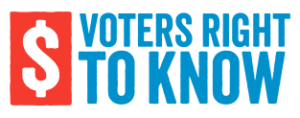June 8, 2018 – On Tuesday, voters in San Francisco passed Proposition E, a ballot measure instituting a first-in-the-nation ban on the sale of flavored tobacco products. Proposition E passed with 68% support, despite campaign spending by opposition groups that dwarfed spending by supporters.
The Money Behind Proposition E
The “No on Proposition E” campaign, which described itself as “a coalition of concerned citizens supporting freedom of choice, adult consumers, harm reduction advocates, community leaders, and neighborhood small businesses,” was funded with $12M from the R.J. Reynolds Tobacco Company. In the weeks leading up to the election, the campaign blanketed the city in ads across all media channels, claiming that the ban was “flawed” and “singled out communities of color.”
By contrast, the campaign supporting the ban spent $2.3M, with the majority of the funding coming from former New York City mayor Michael Bloomberg, but also public health groups such as the American Heart Association and the American Cancer Society.
San Francisco Voters Follow the Money
On account of local laws, and California’s recently passed DISCLOSE Act, all of the campaign advertisements for and against Proposition E were required to disclose the campaign’s top sources of funding in a clearly legible (or audible) disclaimer on the advertisement. In the days following the election, Voters’ Right to Know conducted a field poll to gauge the role that information about the sources of funding for the campaigns had on the outcome of the measure. We found that:
- 67% of voters said that information about the sources of funding for campaign advertisements were important to their decision about how to vote (compared with only 58% who said that the official voter guide arguments were important and 50% who said that news articles were important)
- Among those who voted yes, 78% said that information about the sources of funding were important to their decision
- 37% of voters were able to correctly identify R.J. Reynolds as the source of funding for the “No on Proposition E” campaign; 61% identified the funding source as a tobacco company
These results suggest that when voters can see who is really behind the advertisements seeking to influence their decision, they pay attention and take that information into account—and even millions of dollars of spending by special interests may not be enough to persuade them.


